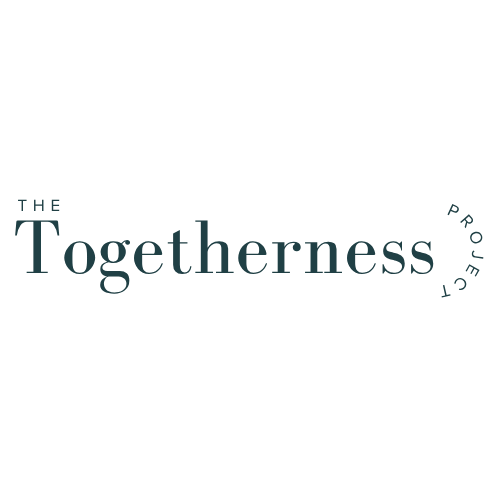
ADHD, Focus & Cognitive Regulation
Understanding ADHD and Attention Difficulties
Attention Deficit Hyperactivity Disorder (ADHD) — and ADHD-like patterns of inattention, restlessness, or impulsivity — can affect focus, organisation, emotional regulation, and self-esteem. For many children and adults, these challenges are not simply behavioural; they are rooted in the way the brain regulates activation, timing, and communication between networks.
At The Togetherness Project, we approach ADHD and attention regulation through a neuroscience and systems lens. Rather than focusing on symptoms alone, we identify and support the underlying brain and nervous-system dynamics that shape attention, motivation, and executive functioning.
Our goal is to help the brain work with you, not against you — building the foundation for calm focus, emotional steadiness, and confidence in learning and relationships.
The Brain and ADHD
QEEG (Quantitative EEG) brain mapping provides a window into how attention, arousal, and impulse control are managed in the brain.
Common findings in individuals with ADHD or attention dysregulation include:
Excess slow-wave (theta) activity, especially in frontal regions, linked to daydreaming or inattention
Underactivation in frontal lobe networks, affecting planning and working memory
Dysregulated fast-wave (beta) activity, associated with restlessness, racing thoughts, or hyperactivity
Imbalanced connectivity between regions responsible for motivation and inhibition
These patterns are not “faults” — they are signals of a brain that’s working hard to self-regulate. QEEG-informed Neurotherapy helps identify these patterns and support the brain to achieve greater balance and flexibility.
How QEEG-Informed Neurotherapy Help
Neurotherapy and Neurostimulation help retrain brain activity associated with attention and regulation, providing a non-invasive, data-driven alternative or complement to medication and behavioural strategies.
Our ADHD and focus programs typically include:
QEEG brain mapping to understand your neural profile and functional strengths
Personalised neurostimulation sessions to increase frontal activation and improve brain-wave regulation
Somatic and breath-based integration to strengthen mind-body awareness and reduce over-arousal
Family-inclusive coaching, supporting parents and partners in understanding ADHD through a neurophysiological lens
Many clients describe feeling calmer, clearer, and more capable of sustained attention after several sessions. Parents frequently report less emotional volatility and improved capacity for self-regulation in children and teens.
Who Can Benefit:
Children struggling with focus, emotional outbursts, or learning challenges
Teenagers or young adults experiencing motivation, restlessness, or academic anxiety
Adults navigating inattentive, hyperactive, or combined-type ADHD symptoms
Parents or carers seeking to better understand and support their neurodivergent loved one
Individuals who have difficulty tolerating medication or who want to combine Neurotherapy with other forms of support
Integrating Brain, Body, and Environment
ADHD is influenced not just by neural activity, but also by sensory processing, emotional context, and family dynamics.
At The Togetherness Project, we can integrate psychophysiology, Polyvagal-informed approaches, and family systems thinking to promote whole-person regulation.
This means we support:
The brain, through tailored Neurotherapy and stimulation
The body, through grounding and sensory regulation strategies
The environment, by helping families and educators understand how to co-regulate rather than escalate
Why Choose The Togetherness Project
Individualised, data-driven care: Every program begins with a QEEG brain map and customised treatment plan.
Integrative and collaborative: We coordinate with psychologists, occupational therapists, educators, and GPs for continuity of care.
Lived and clinical expertise: Our practice blends neuroscience, family therapy, and lived experience of neurodiversity.
Safe and non-invasive: Sessions are gentle, comfortable, and engaging for both children and adults.
Common Outcomes Reported by Clients
Improved focus and attention span
Greater emotional regulation and frustration tolerance
Enhanced working memory and cognitive efficiency
Reduced restlessness or impulsivity
Strengthened confidence and self-awareness
Improved relationships at home, work, and school
A Family-Inclusive Approach
Supporting someone with ADHD often means supporting the whole family. We offer parent consultations and carer coaching to help loved ones understand:
How the ADHD brain functions differently
Strategies to reduce power struggles and promote co-regulation
How to create structure and safety that supports neurodiverse needs
This approach reduces stress, builds connection, and helps families move from frustration to understanding.
Next Steps
If you or your child are experiencing attention, focus, or emotional regulation challenges, visit one of our clinics in Melbourne, Victoria, or Perth (Fremantle), Western Australia, for QEEG-informed Neurotherapy. This may provide the clarity and support you’ve been looking for.
You can:
Book a free 15-minute consultation to explore whether this approach is right for you
Schedule a QEEG brain map to uncover your unique neural profile
Integrate Neurotherapy with talk therapy, family support, or supervision for a whole-system approach

